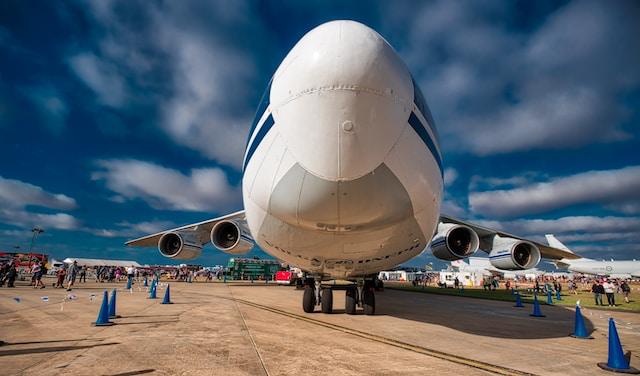Your collective imagination has never stopped being captivated by airplanes, marvelous vehicles that transcend the effects of gravity. However, you are all familiar with the fundamentals of how these colossal flying machines function; there is an entire world of subtleties and complexity that mostly remain hidden from our view. In this in-depth post, you will begin an informative exploration of the six aspects of an airplane that you most likely haven’t given much thought to.
The Wings
There is no such thing as a hard entity comprising an airplane’s wings. They have a tremendous degree of elasticity, which serves them well when they are in the air. Because of this dynamic property, the wings can gracefully flex and adapt to varied air pressures and turbulence, resulting in a smoother and more enjoyable ride for the passengers. It’s almost as if the wings are dancing in the air to make your flight more enjoyable. When you examine the ends of an airplane’s wings more closely, you will notice the characteristic protruding structures referred to as winglets. In addition to their visual appeal, these winglets perform an essential role in the aircraft’s aerodynamics. They put forth a lot of effort to reduce the aerodynamic drag, eventually improving fuel efficiency. They lower the carbon footprint that airplanes leave behind, making air travel friendlier to the environment.
Cargo Holds
The sophisticated temperature control systems found in cargo holds are one of the most remarkable aspects of these spaces. These systems meticulously adjust the inside temperature to suit various cargo, ranging from sensitive electronics to fresh fruit. This allows the temperature to be maintained at an optimal level. Because of this incredible feat of engineering, things are delivered to their destinations unscathed regardless of the temperature or precipitation levels outside. Finding the solution to the complex problem of evenly distributing the aircraft’s mass is a challenge that every airline takes very seriously. For the duration of the flight, the distribution of the aircraft’s cargo and passengers is calibrated with the utmost precision to preserve the aircraft’s stability. Putting in this amount of work will go a long way toward ensuring that you remain safe as you travel through the air.
Flying Essentials Such As Wheel & Brake
Even though it is referred to as the “nose gear,” the front wheel of an airplane serves a duty that goes beyond facilitating safe landings. It may come as a surprise, but the nose gear can rotate. When it comes to ground movement, it is not only a passive component but rather an active participant. The nose gear assists the aircraft in handling tight turns while taxiing along the runway or the tarmac. This helps to ensure that ground operations are carried out safely and efficiently. Aircraft Wheel & Brake Assemblies on airplanes are essential for ensuring flight safety, operational effectiveness, and social and environmental responsibility. They provide safe landings and smooth operations and play a vital part in decreasing costs and the industry’s influence on the environment. This is because they ensure safe landings and smooth operations. These unsung heroes of the aviation industry are a tribute to the sector’s continued commitment to innovation and excellence, exemplified by their work.
Window Coverings
Window coverings on an airplane are more than simple mechanisms for obstructing the view outside. If there is a sudden landing or evacuation, the window shades must be pulled up. This seemingly insignificant action plays a critical part in safeguarding the safety of the aircraft’s crew and passengers. The crew is given the ability to make educated decisions during high stakes because they will have a clear picture of the conditions outside.
The Galley
The difficult task that galley designers must face is preparing gourmet meals for hundreds of passengers while working within a limited space in the kitchen. They conjure up delectable gourmet creations that defy the limitations of onboard cookery by ingeniously designing and meticulously arranging each step of the process. In the aircraft industry, safety comes first, and the galley is no exception to this rule. Every piece of hardware in this extremely limited kitchen is subject to stringent safety regulations. To guarantee that the meals produced and served on board are done in the most hygienic and risk-free manner, every item, from ovens to coffee makers, must be meticulously picked and maintained.
The Restrooms And Urinals
Airplane restrooms are small sanctuaries of seclusion and are ingeniously constructed to provide comfort in restricted areas. The toilets on airplanes make use of vacuum technology, which is an innovation that saves space and also reduces bad odors. Not only does this save valuable room, but it also conserves space. It is a high-tech answer to a fundamental human requirement, which ensures that passengers may clean themselves while remaining comfortable during extended trips.
Conclusion
Take a moment to reflect on the intricacy and ingenuity that lie at the foundation of your upcoming flight on an airplane the next time you get on one. The fascinating world of aviation is home to six ins and outs of an airplane that you probably haven’t given much thought to. These ins and outs are a monument to humans’ inventiveness and engineering quality.



